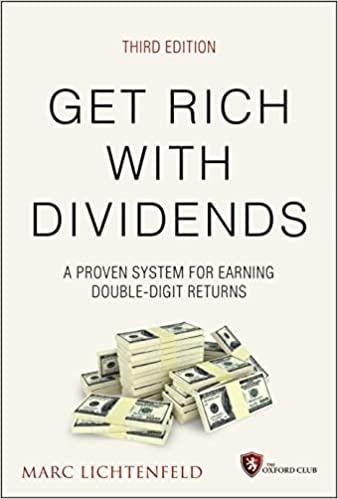Question
Read the scenario, then write into the following section THREE (3) problem symptoms that might suggest underlying problem causes. In each case describe the symptom
Read the scenario, then write into the following section THREE (3) problem symptoms that might suggest underlying problem causes. In each case describe the symptom and explain why you have classified it as relating to a Technology, Organisation or People (TOP) issue. You must have ONE problem symptom and ONE explanation for each category of TOP.
Case Study: Borders Books
CLOSED BORDERS
Hindsight is a wonderful thing, and judging corporate behaviour can be far clearer with the benefit of time.
There are also times when glaring strategic errors only seem noticeable to those on the outside.
So it was with Borders, the global book retailer established in 1971 by two young University of Michigan graduates, brothers Louis and Tom Borders. They founded the firm after having failed to interest existing booksellers in their system for tracking sales and inventory that could predict demand in specific communities. In effect, they started a revolution in book retailing.
Borders wasnt just another retailer occupying a very large area of retail square footage. It was a place where employees were devoted to their jobs, where they prided themselves on their knowledge of their assigned sections and everybody else's. For customers, the stores became a library, a refuge, a place they could come to and simply get lost. Borders had soul, something that, even today, is almost unique to bookstores.
After 20 highly successful years with stores across the US, Borders was acquired by discount department store chain Kmart in 1992. Kmart already owned the mall-based book chain Waldenbrooks but had struggled with the book division. The two businesses were merged in the hope that Borders management would successfully resurrect the ailing Waldenbrooks.
It was not to be. Many of the Borders senior management team left the company. Borders people were book people, not peddlers of discounted clothes, jewellery and toys.
Three years after buying the company, Kmart spun off the Borders division (which included Waldenbrooks) via an IPO. Borders, however, seemed more adept at making mistakes than selling books.
Even though the large store format had worked well in the past, vigorous expansion of its retail footprint right into the internet boom, including the opening of a substantial chain in the UK and stores in other international markets, saddled the company with long-term leases that would later play a pivotal role in its bankruptcy.
Step by Step Solution
There are 3 Steps involved in it
Step: 1

Get Instant Access to Expert-Tailored Solutions
See step-by-step solutions with expert insights and AI powered tools for academic success
Step: 2

Step: 3

Ace Your Homework with AI
Get the answers you need in no time with our AI-driven, step-by-step assistance
Get Started


